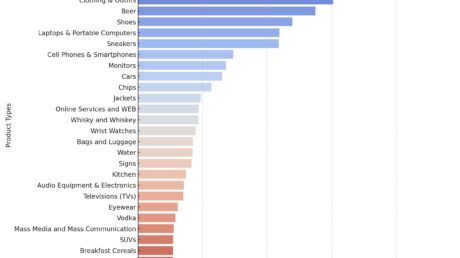BEN’s Erin Schmidt on how to message and measure integrations following this year’s NewFronts and upfronts
Whether it was traditional media powerhouse NBCU, technology behemoth Amazon or living room stalwart Roku, nearly every presentation at this year’s NewFronts spent more time on ways for marketers to get inside the content than on the 30-second spots that surround it. And at this year’s upfronts, the emphasis shifted from the industry’s typical cavalcade of fall show sizzle reels to detailed discussions of shoppable moments within TV content.
There’s a reason for this shift: Research is showing that in-content integrations deliver results while improving the viewer experience. According to data that Amazon shared during their NewFronts presentation, an early adopter of Amazon’s virtual product placement saw a 6.9% lift in favorability and 14.7% boost in purchase intent. This follows a study from longtime ad-supported streaming platform Hulu, which stated in 2018 that product integrations on the platform delivered 89% higher purchase intent and 74% higher brand awareness over traditional 30-second ads.
More recent studies by TV analytics firm 605 have shown the same: Brands can drive lifts in everything from web traffic, in-store traffic and in-store sales by getting inside of content. The expansion of shoppable content—utilizing everything from QR codes to AR experiences—only enhances the potential of branded moments within a television show or film to drive measurable impact.
While this expanded impact is enticing, especially as viewership shifts to streaming platforms, many marketers new to product placement get hung up on two things: How do we control the message, and what tools can we use to measure results? Each of these questions demands a different approach, though both are key to having the confidence to effectively explore this new territory.
The message
When it comes to controlling the message, the reality is, you shouldn’t.
In today’s experience-driven world, authenticity is everything. Leveraging product placement to support a storyline narrative will connect to audiences in a more compelling and real way. It’s about touching your consumer—especially consumers that don’t respond to advertising the same way previous generations did—within the context of a program.
This is an opportunity for a creator to tell the vision of your brand. If you demand guarantees of screen time or force a specific narrative, your placement will be inauthentic to the storyline and inauthentic to the viewer.
Brands that are most successful integrating into content are those that have the confidence to give creators the space to do what they do best. Yes, there are important guardrails that must be put in place. But you need to give creative partners liberty to use your brand in a way that makes sense for their show. It’s about thinking through the opportunity and then allowing your brand to be part of a cultural moment that reaches well beyond an ad impression.
The measurement
In the same way that brand marketers must approach an entertainment strategy differently, media planners and data crunchers have to be willing to build budgets and measure effectiveness more innovatively. From expanding the channels allotted in marketing mix models to leveraging new technologies like direct attribution and artificial intelligence, there are approaches and metrics advances that dramatically improve results.
In the past, entertainment marketing and product placement have been “experimental” categories in marketing mix models—or not even included at all. The challenge was having the data to be able to evaluate impact.
With expanded data sets becoming available every day, previously experimental marketing opportunities like product placement are becoming part of a traditional media mix. This deepens measurability and enables more informed decision-making around the appropriate levels of spend. Working with internal marketing science teams or external vendors, brands whose budget and allocation decisions are driven by marketing mix models need to push for product placement to be included within existing algorithms and systems.
Direct attribution vendors utilize data from smart TVs and digital cable providers—combined with outcome data from web pixels, location data providers or retail sales data sets—to compare the actions of audiences exposed and unexposed to your product’s in-content integration. While this has been available for traditional TV ads for some time, its expansion into product placement is relatively new. By enabling clear understanding of the lift in behavior from those exposed to product placement versus the control, marketers are able to understand the lower-funnel impact of their investments and compare the efficiency and effectiveness of product placement more easily to their investments in traditional ad spots.
Artificial intelligence can also help boost marketer confidence and demonstrate compelling results. AI offers the ability to more accurately predict show performance, providing insight on which shows are most likely to be hits and which will continue to gather impressions over the long haul. This enables brands to identify unproven content opportunities early.
Algorithms remove human bias and help highlight new shows marketers might have instinctively said no to that prove powerful. Likewise, the ability to use AI to project long-tail reach transforms the marketing calculus.
As entertainment marketing possibilities expand, marketers need to ensure they have the right tools and partners to effectively make them part of their approach. When ad-supported platforms like Peacock and Hulu are emphasizing the importance and value of in-content integrations, you know these strategies are clearly here to stay. For marketers looking to capitalize, having the right approach to both control and measurement will ensure they are ready for what’s to come.
Originally published by AdWeek, written by Erin Schmidt




